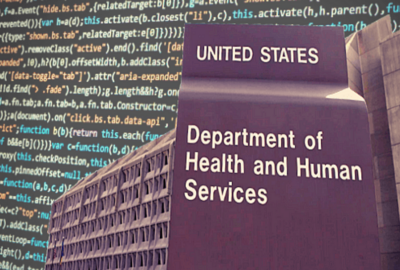By owning, operating network, Marines set the table for the JIE
Brig. Gen. Kevin Nally, the Marines Corps CIO, said the service is updating its network hardware and collapsing five unclassified networks into one. February 13...
wfedstaff | April 17, 2015 6:14 pm
The Navy-Marine Corps Intranet is no more as far as the Marine Corps is concerned.
The service has moved on to a new government owned, government operated network, called Marine Corps Enterprise Network (MCEN).
“It’s an awesome accomplishment by the people who work for me. We don’t even use the term NMCI anymore,” said Brig. Gen. Kevin Nally, the chief information officer of the Marine Corps. “We didn’t see any difference in transition. It’s going really, really well. I have no complaints.”
The Marine Corps officially made the transition June 1 to the MCEN, and now eight months later, the final pieces are coming together.
Nally said the goal of MCEN is to ensure the network serves all Marines equally.
“One of the big things that we’ve done is we’ve gotten away from 1-800-HELP-ME if you have computer problems. We have a regionalized help desk environment, which means local units at base, posts and stations call their cyber folks first and say ‘I need help.’ You can put a face to the help,” he said. “If that individual, Marine or civilian, can’t fix it, it gets elevated up to the next echelon. I’ve been traveling a little bit since the budget works, if you will, the Marines are telling me they really like this regionalized help desk approach.”
Nally said it makes the help desk more personal, and keeps Marines in control of their network to get issues resolved more quickly.
Nally said MCEN will help consolidate five major unclassified networks into one to give the service better security, more efficiency and less labor needed for upkeep.
“It’s basically the work we will do over the next couple of years to collapse the five major networks into one. We will roll out Multiprotocol Label Switching (MPLS) this summer so that buy has been done and we are working the engineering piece for that and we are big players in JIE,” he said. “MPLS will replace the Asynchronous Transfer Mode (ATM) routers because they are end of life. That’s one of ways ahead to better secure your network, and DISA is using them and continues to roll them out.”
Nally said his staff is going to bases, posts and stations to finalize the architecture part of the network consolidation effort. Part of that effort, he said, is updating the hardware that runs the networks, which the Marines bought back from Hewlett-Packard, which runs NMCI.
The new network is part of the way the Marine Corps taking part in the Joint Information Environment (JIE) across all of the Defense Department.
“It’s going to be a network built on standards, identity access management piece, single security architecture, a joint regional security stacks that will be part of the bases, posts and stations and you will plug into that,” he said. “Part of the JIE effort is to collapse networks and data centers. All of this is working toward that end state of the JIE-reducing the IT footprint and making it more secure.”
Another part of the JIE is using common services or at least connecting to enterprisewide services, such as email.
DoD CIO Teri Takai required all the services to provide a plan for migrating to enterprise email provided by DISA.
Nally said the Marine Corps met the goal of the plan earlier this month by creating an enterprise-level address book that interfaces with an authoritative index of all DoD personnel, housed at the Defense Manpower Data Center.
“We now have a global address list where I can find everyone’s name who has a DoD or Office of Secretary of Defense email account. That includes I can find people who are using DISA enterprise email, people in the Navy or Marine Corps who aren’t on DISA email and I can find civilians and contractors. We’ve met that requirement,” he said. “It took efforts from my staff, Marine Corps operations security center and DISA, which was a huge help and big players, we were able to pull it all together.”
The Department of Navy also is leading an effort to develop a business case to compare the costs of DISA email to what they have now.
Nally said the business case analysis should be done in May and then the DoN will have a better idea of where to go next.
Network updates and the JIE aren’t the only priorities Nally has been focusing on over the last few years.
His top priority continues to be to get the warfighter the best tools and technologies possible, especially when they are in theater.
Nally said the Marines have improved how they communicated through chat capabilities.
“We coordinated with the Navy for deployment of a government-off-the-shelf chat capability, called MAKO,” he said. “It operates much like an Internet relay chat that is more tolerant of intermittent communications, which we find in remote tactical environment. It also met the security concerns that we always work with.”
Nally said he will fully transition to MAKO this year and away from the Defense Connect Online (DCO) tool for tactical chat capabilities.
Another priority is the data distribution system modular (DDSM), which is a networking package which contains modules for networking and security.
Nally said it depends on virtualization servers and is easy to transport and set up.
“It’s a hardware and software in a package, like routers and switches and networking type devices that we plug into,” he said. “There are different size packages whether it’s for a battalion, regiment or division type of unit. It comes in a green, hardened box and the Marines can pick it up and transport it. It’s more expeditionary. It’s lighter and requires less power. The requirement is to virtualize and reduce your footprint. We were able to virtualize and reduce the size of servers and requirements of servers.”
RELATED STORIES:
Marine Corps prepares to cut cord on NMCI
Marines test real-time intelligence dissemination via smartphones
Navy, Marine Corps still unsure about migrating to enterprise email
Copyright © 2024 Federal News Network. All rights reserved. This website is not intended for users located within the European Economic Area.
Jason Miller is executive editor of Federal News Network and directs news coverage on the people, policy and programs of the federal government.
Follow @jmillerWFED







